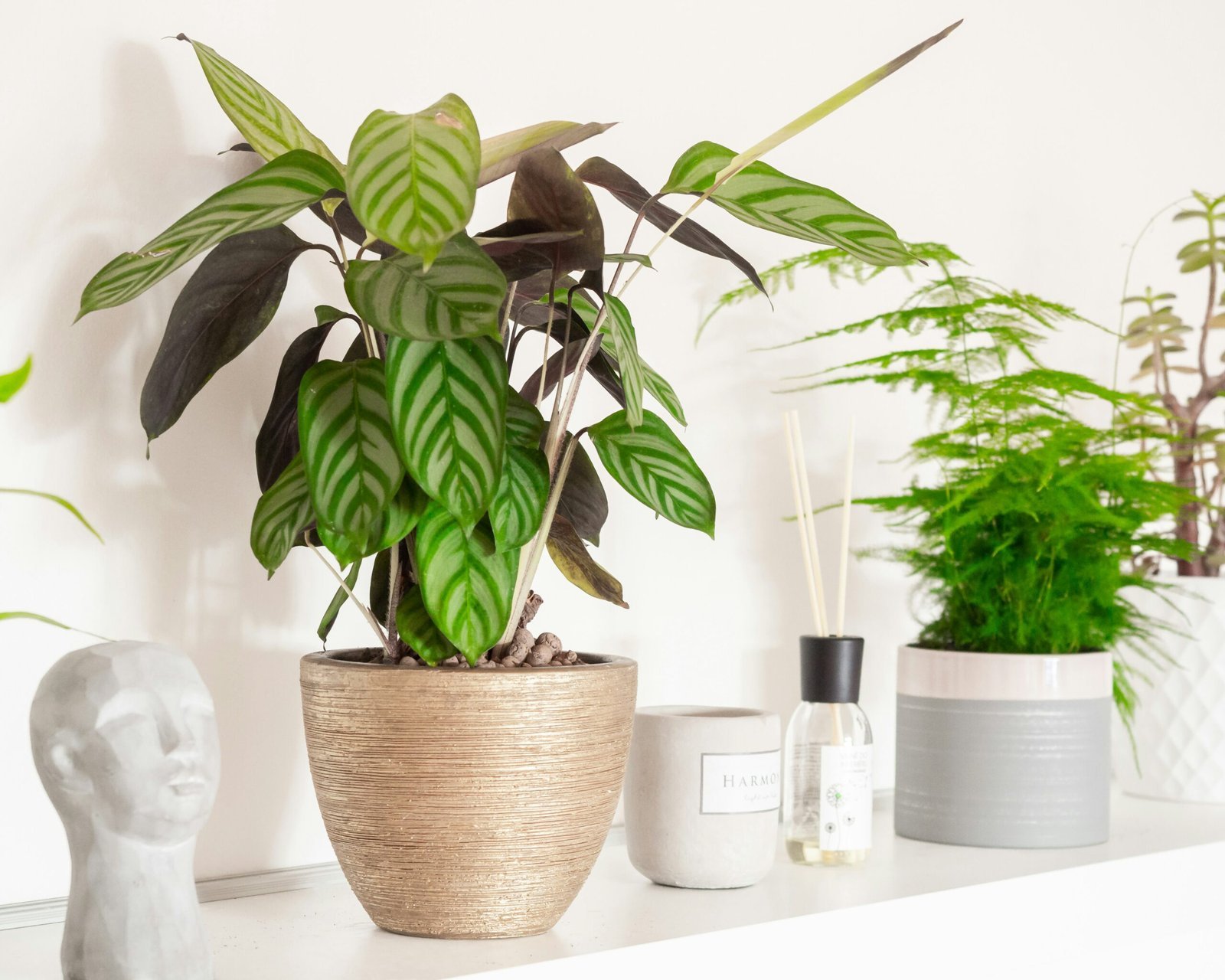The Allure of White: Creating Calm with Color
The color white embodies purity, cleanliness, and simplicity, making it an ideal choice for fostering a serene atmosphere in interior décor. Psychologically, white is associated with clarity and openness, providing a blank canvas that allows other elements in a room to shine while maintaining a sense of spaciousness and light. When used effectively, white can transform any room into a calming sanctuary.

In living rooms, white walls serve as a versatile backdrop that can accommodate various styles and accent colors. Pairing white with natural materials like wood and greenery introduces warmth and vitality, preventing the space from feeling too sterile. White sofas or chairs upholstered in linen add an elegant touch, inviting relaxation while maintaining a crisp, clean look. White shelves and cabinetry can also contribute to a cohesive, uncluttered aesthetic.
Please read our article watch the newly uploaded video from our YouTube channel:
“Grig Stamate – Interior Design Solutions”
https://www.youtube.com/@GrigStamate
50 CALMING Interior Decor Solutions – White, Neutrals, and Natural Wood, #4 (video)
Here, you can see other related videos from our channel:
50 CALMING Interior Decor Solutions – White, Neutrals, and Natural Wood, #2 (video)
50 CALMING Interior Decor Solutions – White, Neutrals, and Natural Wood, #3 (video)
Bedrooms benefit significantly from white’s tranquil influence. A white bedspread combined with soft, plush white pillows creates a cocoon of comfort. To add depth and interest, consider incorporating different textures, such as a chunky knit throw or a silk duvet cover. Subtle variations of white, like cream or ivory, can add warmth without deviating from the calming palette. White curtains can filter natural light beautifully, bathing the room in a soft, welcoming glow.
In kitchens, white cabinetry and countertops can make the space feel expansive and airy. To avoid a clinical appearance, integrate wood elements, such as a butcher block island or open shelving, to add warmth. White tiles with interesting patterns or finishes can provide visual interest while maintaining the room’s cohesive feel. White kitchen accessories, like ceramic dishware or pendant lights, further enhance the serene atmosphere.
By incorporating white in various parts of the home through furniture, textiles, and accessories, it’s possible to create a harmonious and calming environment. The key lies in balancing white with complementary materials and textures, ensuring that the space feels inviting and serene rather than cold or unwelcoming.
Neutral Tones: Finding Balance and Harmony
Neutral tones have become an essential element in contemporary interior décor due to their ability to craft balanced and harmonious living spaces. Colors such as beige, taupe, gray, and cream play pivotal roles in creating an environment that exudes calm and relaxation. Each of these shades offers unique properties that can enhance the aesthetic appeal of any room.
Beige, with its warm undertones, can make spaces feel welcoming and cozy. Taupe stands as a sophisticated option, combining gray and brown to produce a versatile shade that pairs well with various furniture styles. Gray, often perceived as a neutral base, can range from cool to warm tones, allowing for an adaptable backdrop that facilitates the layering of accents and textures. Cream, a softer and more inviting alternative to stark white, imparts warmth and softness to interiors, making spaces feel light and airy.
The art of using neutral tones lies in layering different shades to add depth and interest. By combining light and dark neutrals, one can create visual intrigue without overwhelming the senses. For example, pairing a light gray sofa with dark taupe cushions and a cream throw can establish a cohesive and dynamic look. Selecting furniture and décor items that harmonize with each other is crucial for achieving a unified aesthetic.
Neutral furniture, such as beige armchairs, taupe ottomans, and gray rugs, serve as timeless pieces that can adapt to evolving design trends. Incorporating natural wood elements further complements neutral tones, enriching the space with organic warmth. These neutral shades offer remarkable versatility, effortlessly blending with accent colors and other materials like metal, stone, or fabric.
The adaptability of neutral colors ensures they can seamlessly coexist with bolder hues. Whether complementing vibrant artworks or enhancing the subtlety of monochrome schemes, neutral tones provide a balanced canvas that promotes tranquility and cohesion. This versatility underscores why neutrals remain a favorite choice in interior décor, enabling the creation of serene and harmonious living environments.
The Beauty of Natural Wood: Warmth and Texture
Natural wood possesses an intrinsic allure that significantly contributes to achieving serenity in interior décor. Its warmth and texture can transform any space into a haven of tranquility. Different types of wood such as oak, pine, and walnut afford distinct characteristics, each enhancing the ambiance in unique ways. Pine, for example, with its lighter tones and subtle grain patterns, can brighten up a space, making it feel more open and airy. Contrastingly, the rich, dark hues of walnut add depth, creating a more intimate and cozy environment. Oak stands as a middle-ground choice, offering robustness and a timeless appeal that seamlessly integrates into diverse décor styles.
Incorporating wooden elements in interior design goes beyond aesthetics; it introduces a tactile experience that becomes part of the space’s personality. Wooden flooring is a classic choice that not only provides durability but also evokes a sense of groundedness. Whether opting for solid hardwood floors or engineered wood, the natural grain patterns and textures play a vital role in cultivating a welcoming atmosphere. The same principle applies to wooden furniture like tables, chairs, and shelving units; these pieces not only furnish a room but also infuse it with warmth and character.
To further accentuate the beauty of natural wood, consider wooden accessories such as picture frames, decorative bowls, or even wall panels. These smaller elements tie the room together, offering a cohesive and harmonious look. Selecting the right wood finishes is essential in preserving both the appearance and longevity of these elements. Options range from clear varnishes that showcase the wood’s natural beauty to stained finishes that can enhance or alter the wood’s hue to better suit your décor theme.
Maintenance is crucial to upholding the charm of natural wood. Regular dusting, avoiding prolonged exposure to direct sunlight, and employing appropriate cleaning agents are simple yet effective practices. Periodic reapplication of protective finishes can help maintain the luster and prevent wear and tear. By thoughtfully incorporating and caring for wooden elements, you can ensure that the soothing presence of natural wood endures, enriching your living space with enduring warmth and texture.
Integrating White, Neutrals, and Wood: A Harmonious Blend
Integrating white, neutrals, and natural wood into interior décor is an endeavor that promises to foster a serene and cohesive environment. At its core, this design blend hinges on the principles of balance, contrast, and harmony. When merging these elements, achieving visual equilibrium ensures that neither color nor texture overshadows the other, fostering a serene space.
Firstly, balance is vital. Implementing white elements—such as walls, ceilings, or larger furniture like sofas—can provide a crisp, clean backdrop. Complement this with neutral tones in accessories and soft furnishings to add depth and warmth without detracting from the overall tranquility. For example, introducing beige, taupe, or soft grey cushions, rugs, and curtains can subtly enhance the aesthetic while maintaining an airy feel.
Contrast also plays a pivotal role in successful integration. Natural wood, in its varied shades and grains, introduces organic texture and depth. A wooden dining table or exposed ceiling beams can serve as focal points, grounding the room amidst the lightness of whites and neutrals. Gentle contrast can be created using different wood finishes—from blonde oak to deep walnut—ensuring a dynamic yet harmonious composition.
Harmony in interior décor is achieved by weaving these elements seamlessly together. Consider a living space where white walls and neutral upholstery frame a reclaimed wood coffee table. Further, soft wood tones in picture frames or shelving can draw the eye without overwhelming the senses. One exemplary case is the Scandinavian style, known for its minimalist approach that perfectly marries white, neutrals, and wood, epitomizing simplicity and sophistication.
To elevate this aesthetic, accessorizing with natural elements like woven baskets, ceramic vases, or botanical prints can add texture without clashing. Lighting also plays a crucial role; warm-toned lights, perhaps from wooden or neutral-fabric lamps, can cast a cozy glow, enhancing the room’s homeliness.
Ultimately, integrating these elements effectively creates a tranquil and aesthetically pleasing environment. The beauty of white, neutral hues, and natural wood lies in their timelessness and versatility, making them suitable for various styles, from rustic to contemporary. By adhering to these design principles, every space can transform into a serene haven.
Other related posts from our website:
Let’s see here, three of them:
https://howtobuildahouseblog.com/how-you-can-create-an-interior-with-calm-and-modern-comfort/
https://howtobuildahouseblog.com/sleek-and-serene-fabulous-modern-minimalist-interiors/
We also sincerely hope you like our ideas from this post, and you have also enjoyed our uploaded YouTube video.
See you next time at another article.
Thank you so much for your time. Bye now!



No Responses